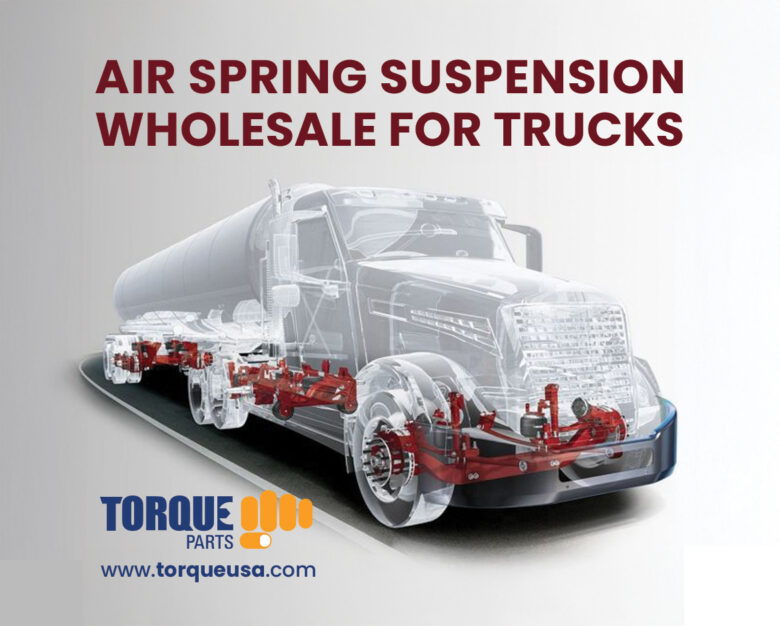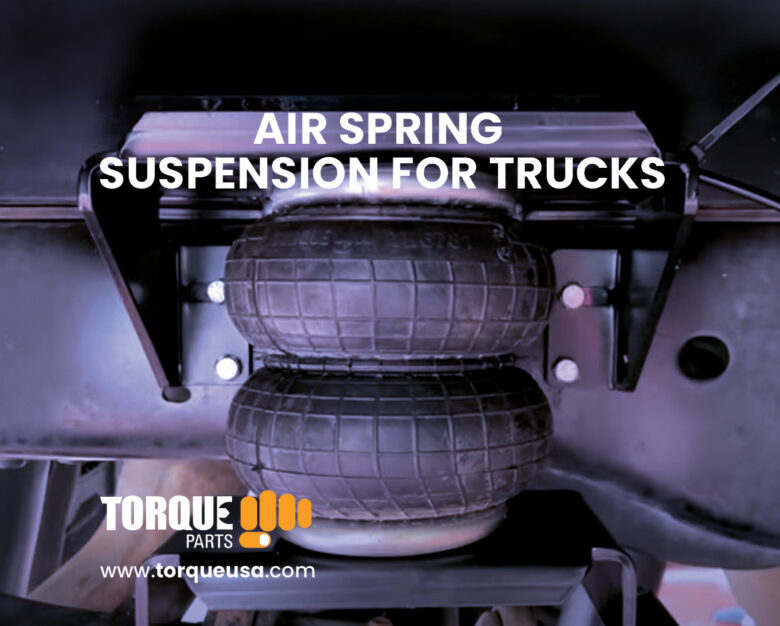
Heavy-duty truck operators and fleet managers face a critical challenge when sourcing replacement suspension components. The market offers countless options, yet not all air springs deliver the performance, durability, and reliability essential for commercial operations. Understanding how to distinguish superior products from inferior alternatives can save thousands in maintenance costs and minimize costly downtime.
Selecting quality air springs requires knowledge of specific technical indicators that separate industry-leading products from substandard alternatives. This guide presents five essential evaluation criteria for identifying premium air springs that will perform reliably under demanding conditions.
What Makes Rubber Thickness a Critical Quality Indicator?
Rubber wall thickness directly determines an air spring’s resistance to wear, punctures, and premature failure. Premium air springs feature rubber walls measuring between 4.5mm and 5.0mm, significantly exceeding the 2.0mm to 3.5mm thickness found in lower-quality alternatives. This enhanced thickness provides superior protection against road debris, extreme temperatures, and the constant flexing that occurs during normal operation.
How Thickness Impacts Longevity
Thicker rubber construction translates directly to extended service life. The additional material resists cracking from UV exposure, chemical corrosion from road salt, and mechanical damage from sharp objects. Convoluted air springs with proper wall thickness consistently exceed four million operational cycles in testing environments, while thinner alternatives frequently fail before reaching two million cycles.
Measuring Rubber Quality Beyond Thickness
Superior air springs utilize proprietary rubber compounds engineered for specific performance characteristics. Premium manufacturers develop formulas that balance impermeability for pressure maintenance, elasticity for proper flexing, and resistance to dynamic cracking. The inner rubber layer focuses on preventing air leakage, while the outer layer emphasizes mechanical protection and environmental resistance.
Why Do Reinforcement Layers and Steel Components Matter?
The structural integrity of an air spring depends heavily on its internal reinforcement system and metal components. Quality air springs incorporate multi-layer fabric reinforcement with precisely spaced cord layers that distribute forces evenly throughout the structure.
Steel Grade and Component Strength
Premium air springs utilize 4140-grade steel for mounting studs and attachment points, providing 25% greater strength than standard materials. This enhanced structural capacity ensures the air spring maintains its mounting integrity even under extreme loading conditions. The top and bottom mounting plates require optimized thickness to resist heavy loads while maintaining proper assembly geometry.
Fabric Layer Engineering
The reinforcement fabric between rubber layers serves as the air spring’s structural skeleton. Quality products feature perfectly spaced fabric layers with optimized cord angles between plies. This precise engineering ensures geometric stability under varying pressures and prevents delamination that causes premature failure.
What Testing Standards Indicate Manufacturing Excellence?
Reputable manufacturers subject every air spring to rigorous quality control procedures before shipment. The most critical indicator is leak testing, with industry leaders achieving testing ratios approaching 100% of production units.
Comprehensive Testing Protocols
Premium manufacturers implement multi-stage testing that includes servo hydraulic performance evaluation, fatigue cycle analysis, and angular life testing. These procedures simulate years of real-world operation in compressed timeframes, identifying potential failure modes before products reach customers. Advanced facilities employ MTS (Material Test System) technology for accelerated endurance simulation.
Physical and Mechanical Property Verification
Quality air springs undergo extensive rubber property testing including tensile strength measurement, tear resistance evaluation, and compression set analysis. Manufacturers verify that rubber compounds meet specific standards for abrasion resistance, temperature tolerance (-40°F to 200°F), ozone resistance, and humidity performance.
How Does Warranty Coverage Reflect Product Quality?
Warranty terms provide direct insight into a manufacturer’s confidence in their product durability. Standard aftermarket air springs typically offer one-year coverage, while premium manufacturers extend protection significantly further.
Extended Warranty as Quality Indicator
The 3 Year Unlimited Mile Warranty represents the industry’s most comprehensive protection for aftermarket air springs. This extended coverage demonstrates manufacturer confidence based on extensive testing data and real-world performance validation. Such warranties only become financially viable when products consistently exceed minimum lifespan requirements.
What Warranty Terms Reveal
Quality-focused manufacturers include the warranty period directly on the product, typically molded into the rubber alongside the manufacturing date and part number. This permanent marking ensures traceability and eliminates disputes about coverage eligibility. Comprehensive warranty programs cover material defects and workmanship failures while clearly defining exclusions for improper installation or application.
What Manufacturing Details Distinguish Premium Products?
Attention to production details separates exceptional air springs from adequate alternatives. These manufacturing specifics may seem minor but collectively determine long-term performance and reliability.
Vulcanization Process Control
Premium manufacturers employ digitally-controlled vulcanization presses that adjust curing parameters based on material type and thickness. This precision ensures optimal rubber properties throughout the product. Facilities equipped with multiple specialized presses for different air spring types demonstrate commitment to proper manufacturing procedures rather than cost-cutting shortcuts.
Quality Identification Features
Superior air springs include permanent part number engraving on the rubber surface for easy identification throughout the product’s service life. The smooth machined surface area contains critical information including cross-reference numbers, manufacturing codes, and quality certifications. Premium products display clear branding and quality markings that resist environmental degradation.
Assembly Precision Standards
The final assembly stage reveals manufacturing quality through details like even coating thickness on metal plates, proper seal integration, and precise alignment of mounting components. Quality manufacturers verify that top and bottom plate assemblies maintain perfect geometric relationships for optimal load distribution and simplified installation.
How to Apply These Quality Indicators
When evaluating air spring options, systematically assess each quality indicator to make informed purchasing decisions that balance initial cost against total cost of ownership.
Key Quality Evaluation Points:
- Verify rubber wall thickness exceeds 4.5mm through product specifications
- Confirm steel components utilize 4140-grade or equivalent high-strength materials
- Review manufacturer testing protocols and quality control procedures
- Compare warranty coverage terms against industry standards
- Examine physical products for manufacturing quality indicators and permanent markings
Benefits of Quality Air Springs:
- Extended service intervals reducing maintenance frequency and costs
- Consistent performance under varying load and environmental conditions
- Reduced inventory costs through reliable product availability
- Minimized unscheduled downtime protecting revenue and customer commitments
- Lower total cost of ownership despite higher initial investment
Final Answer: Identifying quality air springs requires evaluating five critical factors—rubber thickness (4.5-5.0mm minimum), reinforcement and steel component strength (4140-grade materials), comprehensive testing protocols (100% leak testing), extended warranty coverage (3+ years), and manufacturing precision details. Premium products excel across all indicators, delivering superior performance and reliability that justifies initial investment through reduced maintenance costs and extended service life. Fleet managers and operators should prioritize suppliers demonstrating commitment to these quality standards rather than selecting based solely on purchase price.
For comprehensive heavy-duty truck parts including premium quality air springs, suspension components, and expert support, visit Torque USA or explore their commitment to excellence at About Torque USA.


